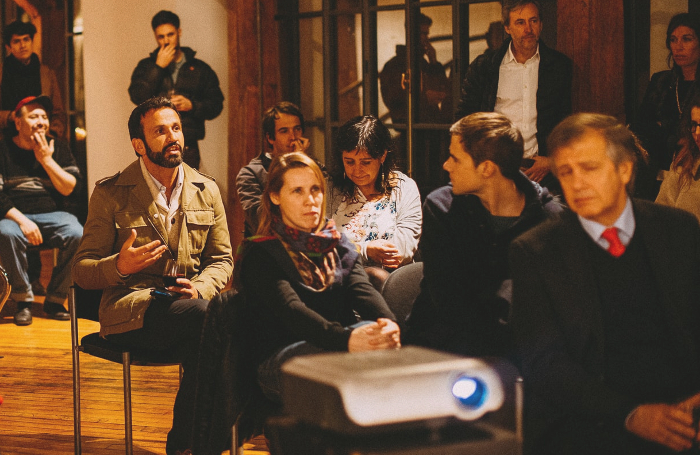Making a pitch, whether it is to a client across a table, to colleagues within your practice, or to a prospective employer, is ultimately a performance. Those that are good at pitching will always approach it as such. Like any performance, it can be practiced.
Pitching comes more naturally to some, but there are techniques that can be learned and honed by anyone who wants to improve their ability to deliver a convincing message. No matter how apprehensive or anxious an architect might feel about standing up and ‘selling’ a concept to someone, the pitch is a crucial career skill for them to master. This is as true for those addressing conference rooms as it is for those whose meetings are only ever one-to-one.
Anxiousness is our worst enemy when it comes to making a pitch, explains movement and communications coach Emma Zangs.
"The vast majority of my clients come to me because they are anxious about promoting themselves or making a pitch," she states. "The brain is very good at overthinking in a presentation situation, which can leave people shaking, sweating, and breathing with difficulty."
Needless to say, these are not signals that will inspire confidence in the object of our pitch. Developing a relaxed attitude to the whole process is therefore key. While numerous studies have debated the relative influence that non-verbal aspects have in our appraisals of each other, it is clear that body language is a big factor in how authoritative we seem.
"Focus on your body and your presence in the here and now," urges Zangs. This is something we can practice, becoming aware of our bearing in everyday, unimportant situations so that it becomes second nature when we are in the spotlight.
Focusing on how you wish to come across, both verbally and physically, can be rehearsed until it comes easily. If you notice you have a tendency to gabble in high anxiety situations, then the simple expedient of talking more slowly and clearly needs to be practiced. Zangs suggests that any regular activity like going to the coffee shop can become a rehearsal, making your pitch delivery voice easier to slip into when it is called upon.
"It might only be a matter of reflecting on how you hold yourself and your posture in a one-to-one conversation," she suggests. This is part and parcel of ‘getting brain and body connected’, which Zangs believes is key to being more communicative and more convincing.
"It is important to make the mind think less about itself by giving it different packets of thoughts – other things to focus on," she counsels. "By thinking about movement and space, rather than your own anxieties, you will be able to focus more on what you are trying to say and achieve."

Zangs will be presenting ‘Winning the Pitch’ at the conference Guerrilla Tactics: Understanding the Developer Mindset on Wednesday 5 November 2019 at the RIBA, 66 Portland Place, London, W1B 1AD.
Her original background is in choreography and dance. She has found that the techniques used by stage performers in telling a captivating visual story can be exploited in order to present a winning pitch.
For example, when preparing for speaking at a public consultation, it is worth giving consideration to anything that might derail the presentation. Improvisation based techniques can be used to explore different ways we could react to situations in advance.
On a very literal level, Zangs recommends giving yourself a pre-pitch physical warm-up shortly before the actual presentation. This involves using similar techniques to dancers or performers to shake away tension and feel more comfortable.
When you are comfortable in their own skin, it becomes easier to pay attention to the room. A seasoned pitcher will pick up on moments at which an audience is slumping and looking down at their phones, and practice elements that add energy to a presentation to keep up their sleeve.
Zangs adds that this kind of training can sometimes be even more effective when carried out as a group activity. In fact, the typical small practice size of around a dozen people is, she suggests, just the right number.
Emma Zangs will be sharing group exercises and providing further insights into ‘Winning the Pitch’ at Guerrilla Tactics: Understanding the Developer Mindset on Wednesday 5 2019 November at the RIBA, 66 Portland Place, London, W1B 1AD. Discounted early-bird tickets are now on sale.
Thanks to Emma Zangs, movement and communication coach.
Text by Neal Morris. This is a Professional Feature edited by the RIBA Practice team. Send us your feedback and ideas
RIBA Core Curriculum Topic: Business, clients and services.
As part of the flexible RIBA CPD programme, Professional Features count as microlearning. See further information on the updated RIBA CPD Core Curriculum and on fulfilling your CPD requirements as an RIBA Chartered Member.
Posted on 22 August 2019.









